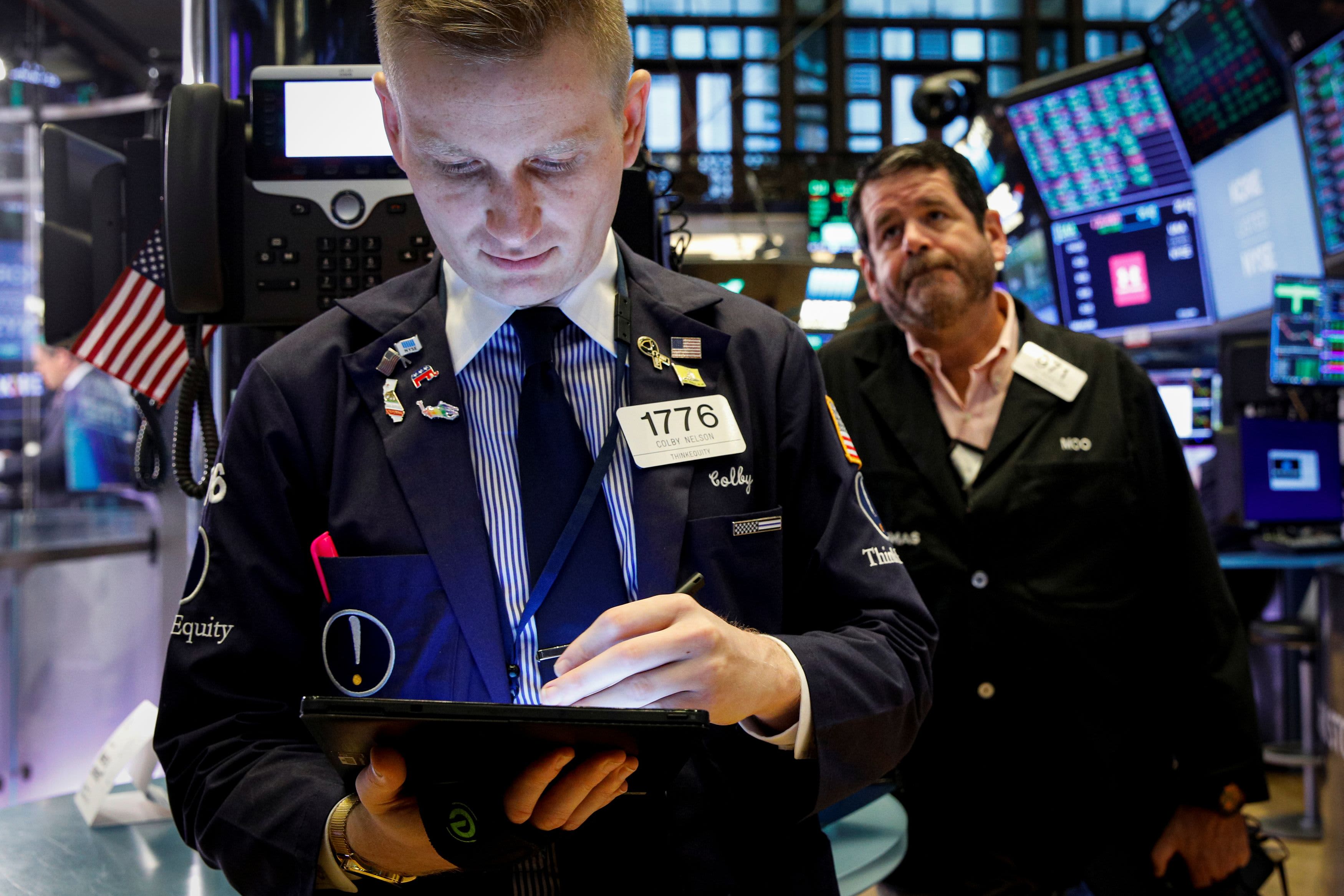
Traders work on the floor of the New York Stock Exchange (NYSE), October 12, 2021.
Brendan McDermid | Reuters
After all but vanishing last year, stock buybacks are surging in 2021 and will likely hit a record in the third quarter.
The surge in buybacks comes at a delicate moment for corporate America. Senators Sherrod Brown, D-Ohio, and Ron Wyden, D-Ore., have unveiled legislation to tax buybacks at a 2% rate. It’s part of the current negotiations to raise money to pay for President Joe Biden’s spending programs. If enacted, the tax is expected to raise $100 billion over 10 years.
“Instead of spending billions buying back stocks and handing out CEO bonuses, it’s past time Wall Street paid its fair share and reinvested more of that capital into the workers and communities who make those profits possible,” Brown said.
Buybacks surging
After dropping dramatically during the Covid crisis, buybacks have increased every quarter since bottoming in the second quarter of last year.
S&P 500 stock buybacks
Q1 20: $199 billion
Q2 20: $89 billion
Q3 20: $102 billion
Q4 20: $131 billion
Q1 21: $178 billion
Q2 21: $199 billion
Source: S&P Dow Jones Indices
At the current pace, the third quarter is approaching the record $223 billion in buybacks for the S&P 500 in the fourth quarter of 2018.
“Balance sheets are generally strong at U.S. companies, in part because of tepid 2020 buybacks, so I expect repurchases for the third quarter to continue to increase further off the second-quarter level,” Ben Silverman, the director of research at InsiderScore, told me.
“The record is within reach,” he said.
Howard Silverblatt, who also tracks stock buybacks as senior index analyst for S&P Dow Jones Indices, agrees.
“Right now, buybacks are coming in 11% ahead of the second quarter, which puts you close to a record,” he told me.
What’s fueling the buyback surge? It’s being led by financials, which are working to return excess capital. Silverman notes that Bank of America bought back $9.9 billion, 28% larger than its next biggest buyback ever. American Express and Morgan Stanley also effected their largest ever buybacks in the third quarter by each spending more than $3 billion.
Technology is also a big buyback player. Facebook disclosed that it repurchased $14.4 billion in shares in the third quarter, a quarterly high and more than twice the amount it repurchased in the second quarter.
The problem with buybacks
Critics of stock buybacks will likely receive more ammunition when full third-quarter results are in for the following two reasons:
Buybacks are not reducing share count. One of the main arguments in favor of stock buybacks is that it can reduce a company’s shares outstanding, which will then improve the earnings per share.
That’s true, but only if there is an actual reduction in shares. The problem is that the same companies also turn around and float new shares, often because they are granting stock options to employees.
The result, often, is a wash. The total share count for the S&P 500 is slightly higher today than it was in 2018.
S&P 500: shares outstanding
2018 300 billion
2019 296 billion
2020 312 billion
2021 (YTD) 309 billion
Source: S&P Dow Jones Indices
“Share count has increased, despite the fact that $1.6 trillion has been spent on buybacks since the end of 2018,” Silverblatt said.
Corporate America is again getting rich cashing in stock options. “Because the stock prices are so high, it’s likely more employees are exercising their options,” Silverblatt said.
Silverblatt did not have numbers to quantify how much was being cashed in, but he noted the market’s dramatic rise in the last few years means that stock options granted to employees are in the money, so it’s likely corporate executives are cashing in those options.
These likely developments will play into the hands of buyback critics, like Sens. Brown and Wyden.
Would an excise tax on buybacks cut back on them? More than half — 55% — of U.S. CFOs say a tax on buybacks would lead their firms to repurchase fewer shares, according to a recent CNBC Global CFO Council Q4 2021 survey.
Buybacks are largely a tech phenomenon
Buybacks have supporters on Wall Street who argue that in the absence of other investment opportunities that make economic sense, repurchases are a rational way to allocate cash flow.
Buybacks are largely concentrated in the technology space. Five companies accounted for nearly a third of all buybacks:
Top 5 buybacks (second quarter)
Apple $26 billion
Alphabet $13 billion
Facebook $8.4 billion
Oracle $8 billion
Microsoft $7 billion
Source: S&P Dow Jones Indices
Why are buybacks so concentrated in tech companies? “These are the companies that have the cash flow,” Silverblatt said. “These companies are massive. Apple alone did 13% of the buybacks. They have the money, and they are choosing to use it to buy back stock.”
Buybacks: Less bang for the buck?
From Wall Street’s perspective, the biggest issue is that the ocean of cash going into buybacks may not impact the bottom line as much as anticipated.
Partly, it’s because share counts are not declining, but there’s another problem: Because stock prices are much higher than they were in 2018, stock buybacks are purchasing fewer shares.
The S&P 500 is up 84% since the close of 2018, when buybacks reached their peak, at $223 billion.
Because stock prices are much higher, “that $223 million is not impacting earnings nearly as much as it did in 2018,” Silverblatt said.
As an example, he noted that in the fourth quarter of 2019, 21% of the companies had at least a 4% reduction in share count.
Last quarter, only 5% of companies had a 4% share count reduction.
Bottom line: “You are going to need to spend a lot more money to have a real impact on earnings,” Silverblatt said.




